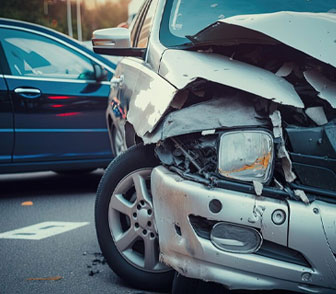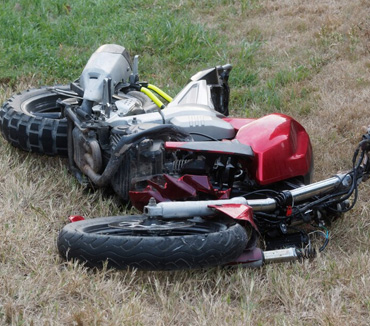Who Is at Fault in a T-Bone Car Accident?
A T-bone car accident, sometimes referred to as an angle collision, occurs when the front end of one car strikes the side of another car, forming a T. These accidents are also referred to as T-bone broadside collisions, if the impact occurs on the passenger side of a car. T-bone accidents are among the most deadly and dangerous of traffic crashes and determining fault is not always as easy as it may seem.
When a T-bone car accident occurs, multiple different parties can be at fault simultaneously. In certain situations, one party can be fully liable for a T-bone accident, while in others, two or more parties can share liability.
Determining Which Driver is At Fault in a T-Bone Accident
Determining fault in any car accident requires physical evidence and documentations such as photographs, eyewitness accounts, and the official police report for the accident. In the moments following your collision, take as many photographs of both vehicles as you can. Show the collision from multiple angles and the damage suffered by both vehicles.
The official police report will include details about the collision that can be used to determine fault, such as whether any local ordinances were broken.
What might cause a driver to enter an intersection wrongfully? Here are some common factors, many of which often occur in combination:
Speeding
Drivers who approach an intersection at a high-speed may not be able to stop in time to avoid entering the intersection. Speeding poses particular dangers when a driver accelerates to beat a stoplight or to sneak through an intersection just ahead of crossing traffic, rather than trying to slow down.
Running a Red light
In this type of T-bone accident, the drivers are driving perpendicular to each other. They are destined to cross each other’s paths. They both enter the intersection at the same time, usually traveling at the full speed limit for the road. Whichever car had the red light at the time will be at fault.
Running a Stop Sign
The most common type of T-bone collision involves one car having a stop sign while the other car has no traffic control device. In this type of T-bone crash it is easy to determine who is at fault. The driver that had the stop sign will always have fault because that driver did not have the right of way.
Inattention or Distraction
An intersection is not a place for a driver to let their mind wander or become distracted by a phone, radio, food, children, pets or other distractions.
Impairment
Impaired drivers make poor decisions. Driving while impaired by alcohol, drugs, or fatigue can cause a driver to make risky, dangerous decisions that can easily end with their vehicle colliding with crossing traffic. An impaired driver may have trouble seeing and analyzing hazards and they have a high likelihood of ignoring stop signals.
Leaving a Parking Lot
When a car is leaving a parking lot that does not have a traffic control device, the driver of the car has an obligation to ensure the traffic is clear in both directions before crossing the street. When the driver does not see a car coming, they may pull out to cross the street and cause a T-bone accident.
Making a U-turn Across Traffic
Making a U-turn is not always a safe thing to do. If the driver making the U-turn fails to recognize a car coming the opposite direction they may pull into traffic and get hit on the side. The driver making the turn will have fault in this situation.
Who Is Liable for My Bills Following a T-Bone Accident?
If you or a loved one has been injured in a T-bone accident, you may be forced to deal with serious and lasting injuries. You may find that the medical expenses are piling up, all while you are unable to work to support yourself and your family.
If the accident was not your fault, you should not have to pay out of your own pocket for your expenses and the repair or replacement of your damaged property. You may be eligible to pursue compensation for:
- Medical bills
- Wages for time missed at work
- Therapy and rehabilitation costs
- Repair or replacement of property
- Pain, suffering, and mental anguish
The above list is not exhaustive. There may be other expenses and damages that you are owed.
If an auto accident resulted in the death of a loved one, you are able to seek justice for them through a wrongful death claim. Your family could hold the party at fault for the fatal accident responsible for your loss of companionship, future wages and earnings, funeral expenses, and other damages.
A Car Accident Lawyer Can Make All the Difference
If you have been involved in a side impact collision, even if law enforcement comes to the scene, the responding officer may not make a determination of fault in the accident report — or they could even make an incorrect fault determination. And in the absence of any definitive word, if different witnesses say different things, it will not take much for the other driver to claim that the accident was your fault. It may make sense to put your car accident case in the capable hands of an experienced personal injury attorney, who will build your strongest case and put you in position for the best outcome.
If you or a loved one has suffered injury in a T-bone accident and have questions about seeking legal action, call us now at 1-877-241-9554 to learn more about your options. A free consultation is just a phone call away.
Request A
Free Consultation
Fields Marked With An ” *” Are Required










